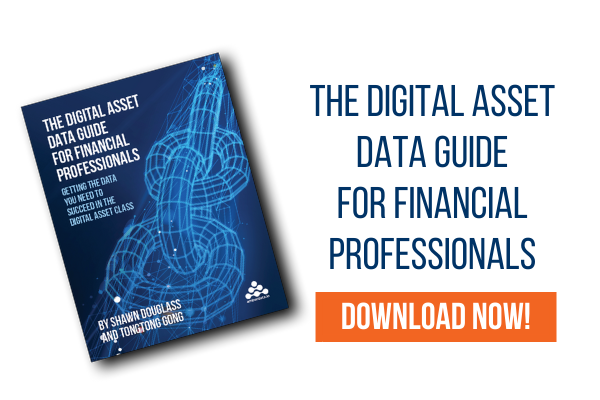
One of the most anticipated developments in cryptocurrency is the long-awaited Ethereum Merge, expected in Q3/Q4 of 2022. The merge will combine the "Mainnet" – Ethereum's primary blockchain – with the more recently launched "Beacon Chain" (which has been running in parallel since December 2020). This will complete Ethereum's switch from the energy-intensive proof-of-work consensus mechanism to the much more efficient proof-of-stake mechanism.
Why is Proof-of-Work Energy Intensive?
Proof-of-work is the first cryptocurrency consensus mechanism. Though it was made popular by Bitcoin, the concept predates the arrival of the first cryptocurrency by a decade. The mechanism requires participants (miners) to expend computational power (work) by running hashing functions until it reaches an output with the correct number of leading zeroes, at which point a new block will be mined. Because these outputs are 64 characters long, the number of possible combinations is extremely high. Conversely, the probability that any given output will match the string needed for the next block is very low. The only way to increase mining speed is to increase the amount of computational power used.
Miners use powerful and sophisticated mining rigs that can run hashing functions quickly, but require significant amounts of energy to operate. According to Business Insider, Bitcoin mining accounts for 0.5% of the world's energy consumption, more than most small countries. This hunger for energy puts the proof-of-work mechanism at odds with today's trend towards sustainability, making the climate-conscious hesitant.
How Does Proof-of-Stake Differ?
Unlike proof-of-work, proof-of-stake does not require the solution of hashing functions, eliminating the need for energy-intensive mining hardware. Instead, the mechanism uses coins provided as collateral (staked) to mine or validate blocks, picking validators randomly from a pool. The odds of being selected as the validator depend on the number of coins staked instead of computing power, so the computer performing the validation does not need to be specialized or particularly powerful.
Switching to proof-of-stake will reduce energy use by 99% while increasing transaction speed and the network's ability to scale. Currently, the Beacon Chain requires a user to stake 32 ETH to become a validator. Users that don't have enough ETH can join a staking service and serve as part of a validation group.
How Will The Merge Help Institutions?
The Merge will make Ethereum substantially more attractive to institutions in two main ways:
First, the dramatic reduction in energy needs will make climate impact a non-issue for institutions concerned with ESG scores.
Second, it will increase potential yields without requiring considerable hardware investments. Institutions can deploy capital to stake more coins, instead of buying more computer power. This increases their odds of being chosen as validators and earning rewards in the process.
A downstream benefit is that the increased transaction speed could accelerate the adoption of DeFi, much of which is already built on Ethereum.
Is There a Catch?
While there are no specific downsides to a blockchain using proof-of-stake instead of proof-of-work for its consensus mechanism, the big challenge for Ethererum is making the switch.
An unprecedented and complex undertaking, the Merge has already seen delays despite over a year of work (the Ethereum Foundation had been targeting Q2 of 2022 until April). Though the developers are taking great care to test everything, there's no guarantee that things will go smoothly when the switch is implemented. The Merge may be pushed back further, possibly into 2023, depending on how the final tests go.
How to Prepare for the Merge
Investors who view the Merge as a promising development because of its lower energy use and higher transaction speed can prepare by learning more about Ethererum and how it works today, focusing on the Beacon Chain that will become the main chain once the Merge is complete.
As your organization prepares to enter digital assets, and the Ethereum-based decentralized finance space, blockchain data is critical. Amberdata can provide this data in institutional-grade formats so that you don't have to become a blockchain data expert. Our platform delivers comprehensive data and insights into blockchain networks, crypto markets, and decentralized finance, empowering financial institutions with real-time, historical fundamental & market data for research, trading, risk, analytics, reporting, and compliance. Request a demo today to learn how we can help your institution prepare for the Merge and benefit from the opportunities it will create.
Amberdata
Amberdata is the leading provider of global financial infrastructure for digital assets. Our institutional-grade solutions deliver data, analytics and comprehensive tools and insights that empower financial institutions to research, trade, and manage risk and compliance in digital assets. Amberdata serves as a...
